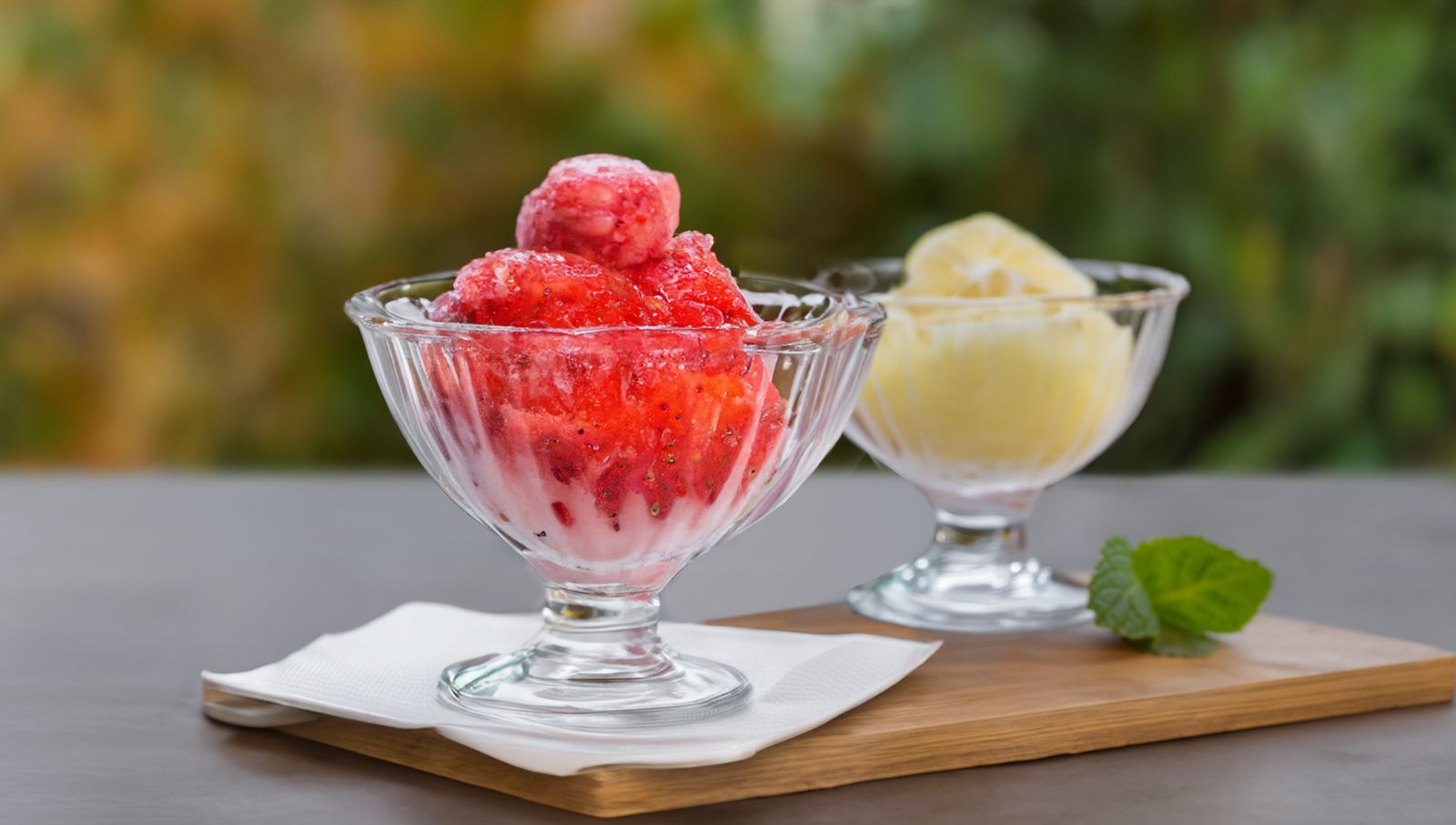SICILIAN GRANITA, ITALIAN MYTH.
03/07/2024
 Granita come in a variety of flavors, but in Sicily fresh fruits and nuts are the most popular. This is no surprise considering the many varieties of citrus fruits grown on the island, lemons from Pettineo or Finale di Pollina for example, not to mention its famous oranges. As for nuts, slushes made with Sicilian almonds or pistachios are also traditional favorites. At Bar Gelateria Naselli the top sellers are the black mulberry and mandarin orange granita.
Granita come in a variety of flavors, but in Sicily fresh fruits and nuts are the most popular. This is no surprise considering the many varieties of citrus fruits grown on the island, lemons from Pettineo or Finale di Pollina for example, not to mention its famous oranges. As for nuts, slushes made with Sicilian almonds or pistachios are also traditional favorites. At Bar Gelateria Naselli the top sellers are the black mulberry and mandarin orange granita.Granita, Salvatore continued, is the simplest recipe in the gelato shop after popsicles, a product made of water, sugars, and in most cases fruit. The small differences that can be found in the various parts of the island lie simply in the choice of the percentage of sugar, which as tradition dictates ranges between 18% and 22%. So sometimes you can find it served with a straw, sometimes creamy enough to place in a brioche. According to Salvatore, the perfect Sicilian slush is thick enough to keep a spoon placed in the middle from falling off to the side.
 Salvatore takes us back to his childhood, when the aroma of citrus juices drew him to the production space, wondering why on earth his parents were adding water and sugar to oranges and lemons when they already tasted so good on their own. Only as he grew up and also became a gelato artisan did he realize that a good granita is a well-balanced granita. In fact, knowing the properties of their ingredients, today the gelato professional produces granita in a wide variety of flavors, including gourmet granita like ricotta, tomato or bell pepper.
Salvatore takes us back to his childhood, when the aroma of citrus juices drew him to the production space, wondering why on earth his parents were adding water and sugar to oranges and lemons when they already tasted so good on their own. Only as he grew up and also became a gelato artisan did he realize that a good granita is a well-balanced granita. In fact, knowing the properties of their ingredients, today the gelato professional produces granita in a wide variety of flavors, including gourmet granita like ricotta, tomato or bell pepper.The Carpigiani Gelato University instructor underscores the traditional background of this product: "granita is certainly a traditional Sicilian product but it is now known worldwide as an Italian specialty and it truly has unlimited potential." It's a product that's most popular in warmer regions thanks to its thirst-quenching power, but Salvatore is sympathetically reminiscent of the watermelon-flavored slush prepared in Switzerland for a gelato shop in the city center.
Granita can best express the characteristics of the surrounding community by exploiting local fruits, so it can be said that there are no geographical boundaries for this product.
Today Salvatore carries on the family business with honor, and in his gelato shop he produces as many as 18 flavors of gelato and 14 granita, and through his storefront he can continue to play with the colors and aromas of his beloved Sicily.


Comments (0)